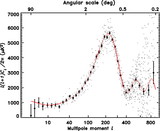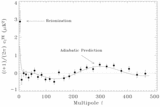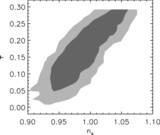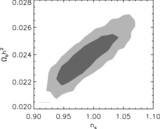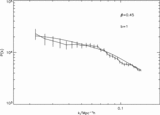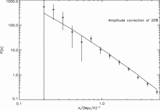Image Details
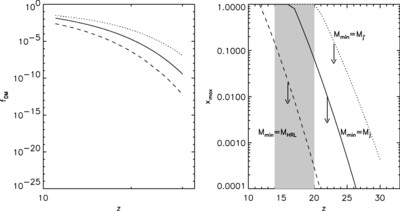
Caption: Fig. 10.
Left: Fraction of the universe in bound objects with mass greater than ﹩M^{\mathrm{HRL}\,}﹩ (dashed line), ﹩M^{j}=10^{6}\ M_{\odot }﹩ (solid line), and ﹩M^{j^{\prime }}﹩ (dotted line) in a model with a running spectral index. The curves were computed for the 1 σ upper limit parameters for this model (see Fig. 9). These should be viewed as upper limits on the mass fraction in collapsed objects. Right: Ionization fraction as a function of redshift and is based on the assumptions described in § 4.7. As in the left panel, we use the 1 σ upper limit estimate of the power spectrum so that we obtain "optimistic" estimates of the reionization fraction. In the context of a running spectral index fit to the data, the WMAP detection of reionization appears to require that H2 cooling played an important role in early star formation.
Copyright and Terms & Conditions
© 2003. The American Astronomical Society. All rights reserved. Printed in U.S.A.


